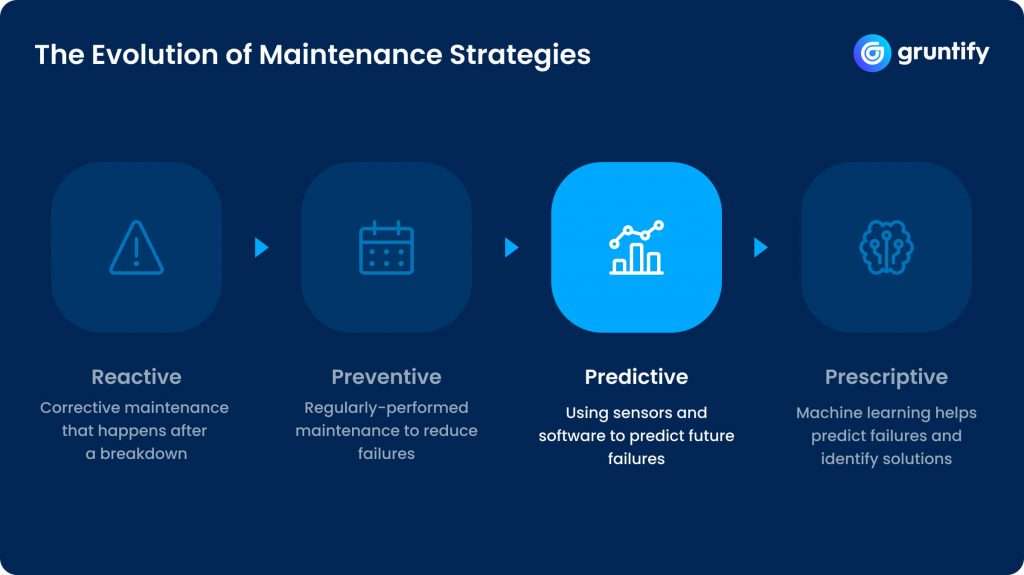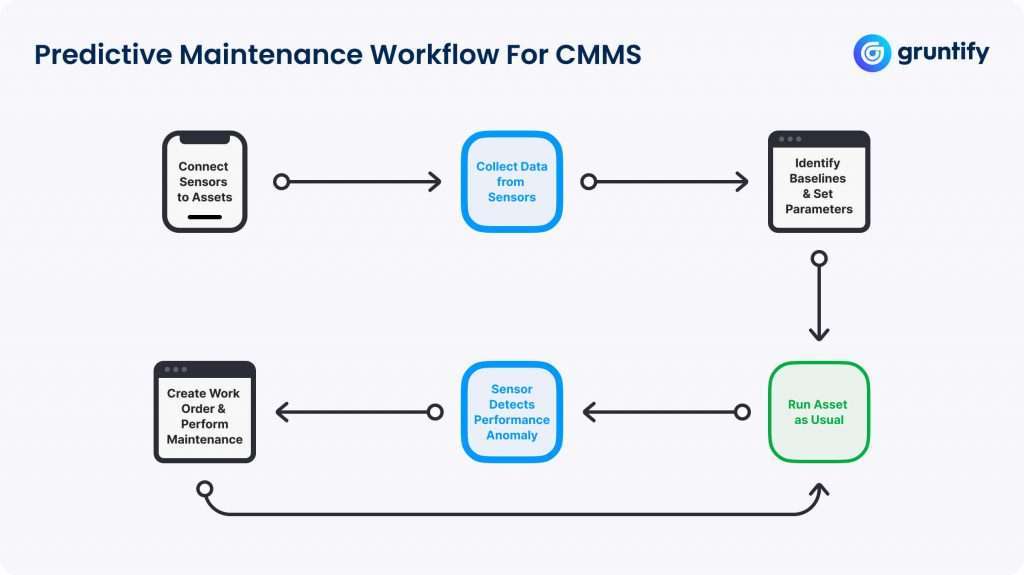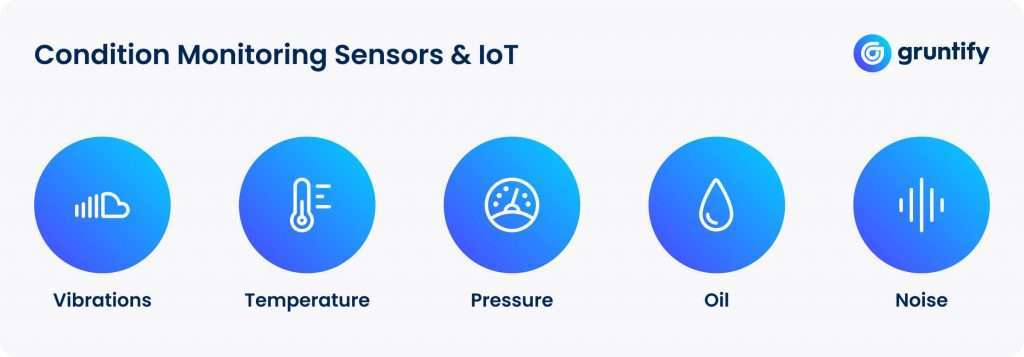According to data from Building Owners and Managers Association (BOMA), repair and maintenance costs account for 15% of a business expense. Predictive maintenance appears to be leading to a tenfold increase in ROI, with a 25%-30% depletion in maintenance costs, a decrease of 70%-75% in breakdowns, and reduced downtime of 35%-45%.
Predictive maintenance has been around for a while now in the manufacturing industry. With technology advancing and becoming more complicated, it can result in considerable savings for manufacturers.
When predictive maintenance is applied efficiently, it can be more economical than any conventional corrective and preventive approach to maintenance. To ensure smooth productivity, quality in products, on-schedule productivity, and a safe environment for the workers, proper maintenance is a key point.

What is Predictive Maintenance?
It is a method that utilizes condition-monitoring tools along with other data-driven techniques. It keeps track of a structure’s performance or a piece of equipment throughout an operation. The number one goal of predictive maintenance is to restrict possible equipment from breaking down as soon as possible to steer clear of any need for more difficult maintenance activities.
With the use of condition-monitoring techniques, predictive maintenance traces how assets are performing during regular operation. It roots out any possible bug and fixes it before any asset failure occurs.
This reduces the cost for spare parts and supplies, cuts down the time put in on each piece of asset, reduces the hours lost in production with unexpected downtime, and improves the safety of the workers in the place of work.
If we are to define the health of assets using human health, predictive maintenance could be set side by side with exams carried out on persons who are most likely to get sick due to a condition that’s been existing in the individual. For example, someone whose family has a history of heart disease may need to carry out a heart exam. This is mostly because the individual has a higher chance of developing cardiovascular disease than the standard patient.
How to Implement Predictive Maintenance
Predictive maintenance uses four main components. It uses these to track the condition of a piece of equipment and alert the responsible people of an imminent equipment failure:
Condition Monitoring Sensors
Responsible for sending real-time performance data and equipment status data. This gives you an accurate representation of how the equipment looks inside.
Internet of Things Technology
Allows effective and reliable communication between the asset, condition monitoring sensors, software solutions, and cloud technology.
Predictive Data Models
The hardest and most crucial part of predictive maintenance. They have to work with a lot of different variables while checking how they interconnect and affect each other.
A Computerized Maintenance Management System
A software solution that collects data and then creates a work order for a technician to complete when an anomaly occurs.
Once everything is set, you can start the predictive maintenance process for your business. You need to identify the most valuable and critical assets so that they can fall under the program’s implementation. After identifying which assets to pick, here are some additional steps that will guide you to predictive maintenance.
1st Step: Use pre-existing data to analyze the asset. The data gives you an accurate representation of how the asset functions to set the baseline for a predictive maintenance program.
2nd Step: Identify different modes of failure with a focus on the frequency and severity of failures. Run an analysis of the equipment and remember to rate the difficulty of identifying a specific failure.
3rd Step: Install condition monitoring sensors. There are many types of sensors, and you have to pick one that fits the asset’s specifications.
4th Step: Work with a specific set of algorithms instead of having one for each asset. This is because the algorithm will improve automatically once more data has been fed to it.
5th Step: Analyze data in bulk efficiently using cloud-based technologies which can read data for many machines at a time.
6th Step: Set up alerts through the CMMS for detectionof failure and notifying a technician.
What are the Advantages and Disadvantages of Predictive Maintenance?
Predictive maintenance proves to be a highly effective and valuable asset that improves the overall reliability and maintenance of an operation. The method is especially suitable for assets that are highly crucial for running an organization.
The major advantage of predictive maintenance is that it ensures assets that require regular maintenance are shut down before they completely break down. It helps you reduce the amount of time and cost of replacing a piece of equipment.
However, predictive maintenance is yet to hit the mainstream due to its relatively high barrier for entry. The whole process requires a substantial initial investment for the purchase and installation of condition monitoring equipment. You also need to develop predictive models which require specialized skills, most of which will be outsourced. Finally, all the functionalities are supposed to be merged with a CMMS.

Merging Predictive Maintenance With a Software Solution
Over the years, advancements in technology have made predictive maintenance easier. Nowadays, a computerized maintenance management system (CMMS) is crucial for predictive maintenance and has effectively shifted the mindset from manual methodologies or reactive, predictive maintenance. Here are some reasons why CMMS is at the center of predictive maintenance implementation.
- A great source for initial data used to start the maintenance process.
- CMMS automates the whole process by generating work orders or alerts when condition monitoring sensors detect an imminent failure of equipment.
- The software solution helps in interpreting data, making it easy for users to understand.
- It serves as a central organization tool, pulling different data on the equipment together and presenting it all in one place.
Conclusion
Combining management strategies allows you to effectively maintain your assets. So look for a solution like Gruntify that can support a variety of strategies. Gruntify is flexible enough to support what you need when you need it. Additionally, using our API, you can take input from IoT devices and trigger work in Gruntify based on available data. Our focus is more on location-based assets, such as buildings, public structures, roads and infrastructure, and in-field equipment, rather than fixed equipment in factories.
Visit our website today to get a free trial or contact us for a demo.

